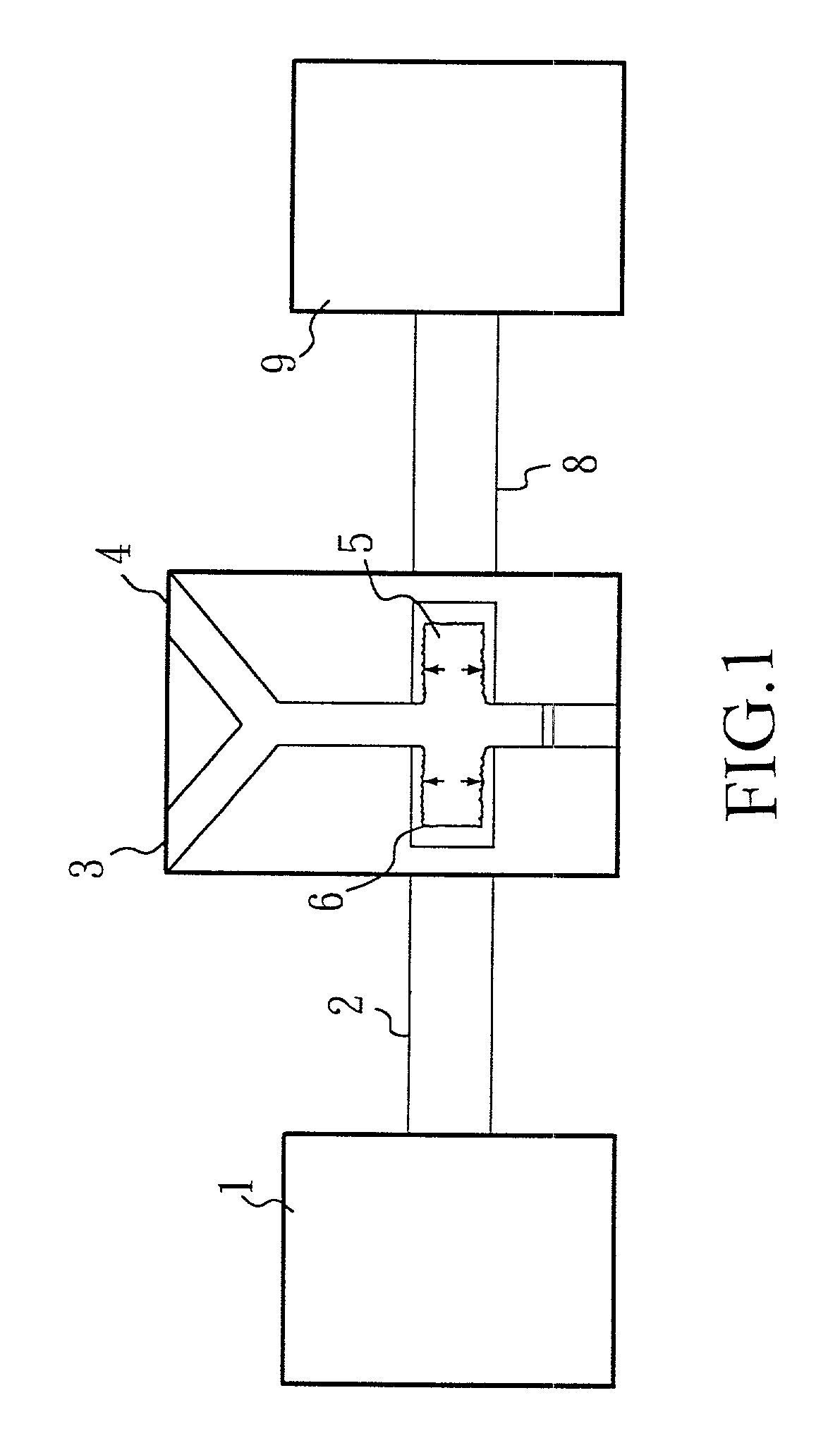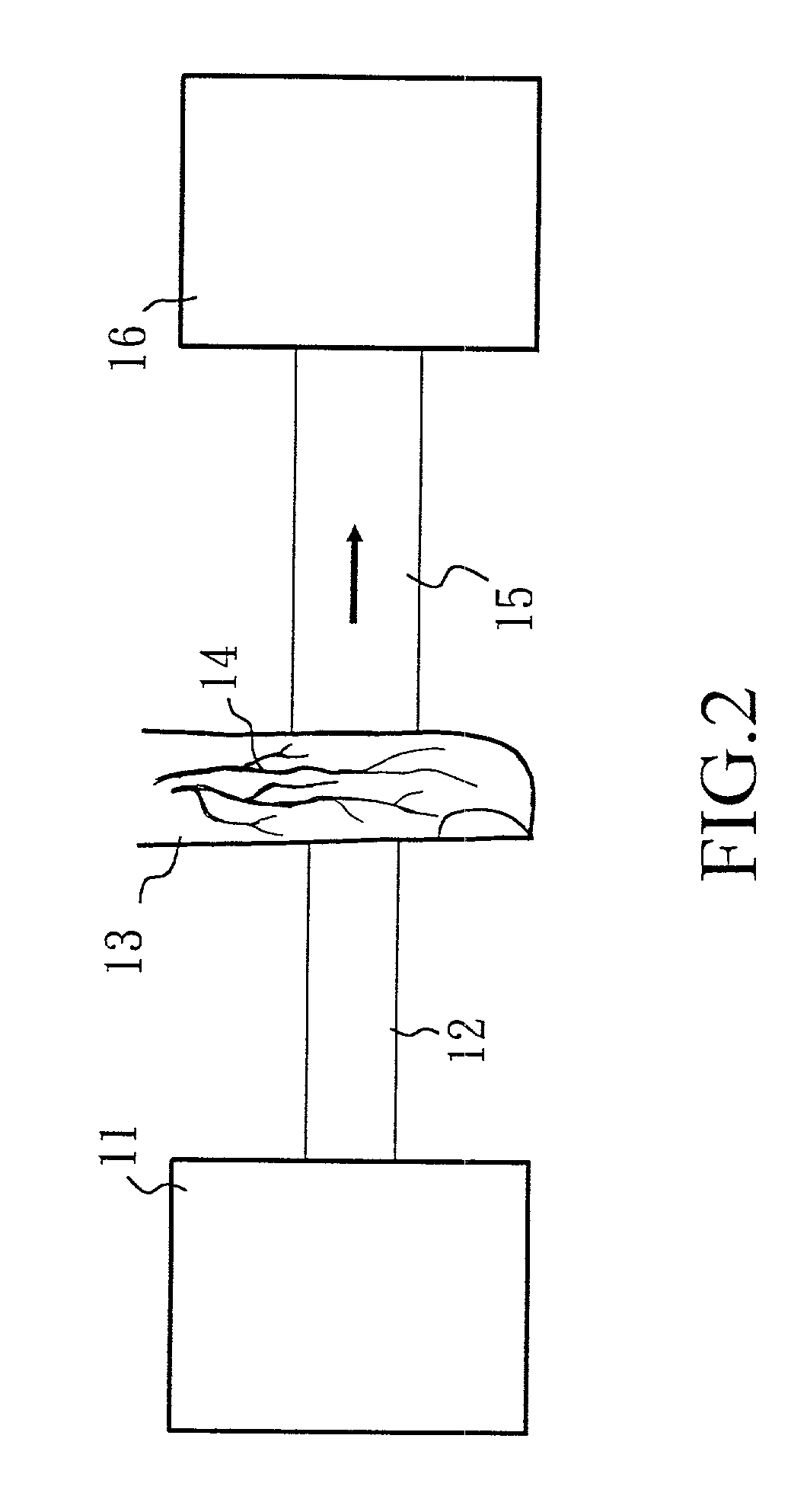Mold-in method and apparatus
a technology of method and apparatus, applied in the field of mold-in method and apparatus, can solve the problems of hardly accurate analysis results, large scattering noise, and many problems in putting the concentration measurement into practi
- Summary
- Abstract
- Description
- Claims
- Application Information
AI Technical Summary
Benefits of technology
Problems solved by technology
Method used
Image
Examples
case i
[0092]
[0093] Let A(t) denotes the blood pressure signal, and B(t) denotes the blood signal that flows out of the blood vessel, which can be measured by, for example, the laser Doppler flow meter. As mentioned in the Mold-In medium method, the blood pressure wave can be monitored by a specific signal from one ingredient in the arterial blood such as the absorption signal of water or hemoglobin. Therefore, a light source may be used to monitor the pressure by the waveform. Another light source, which may be the same one as the above, is used to monitor the blood flow by the Doppler signal. Therefore, from the ratio:
[0094] E.sub.B=[B.sub.max--B.sub.min] / [P.sub.max--P.sub.min], where
[0095] B.sub.max is the maximum blood flow;
[0096] B.sub.min is the minimum blood flow;
[0097] P.sub.max is the maximum blood pressure; and
[0098] P.sub.min is the minimum blood pressure,
[0099] the efficiency of blood perfusion can be expressed.
[0100] The value EB may be approximated by:
[0101] F.sub.1 [B(t)] / F....
case ii
[0103]
[0104] From the blood pressure wave monitored by the specific signal in the arterial blood, the best time to deliver drug into the human body can thus be determined. During the systolic, a large amount of blood is pumped into the artery, as well as tissues. Meanwhile, if the drug, such as antibiotic, hormone or nutrient is injected into the body at this moment, the mixing of the drug with the blood stream will be maximized. This will also cause less trauma due to the injection which may be caused by toxication, or osmotic effect of high concentration of the drug, or just sudden increase of internal pressure to hide the normal blood flow, and the efficiency of distributing the drug into the whole body can thus be improved.
[0105] The above method can be incorporated into every injection device. The injected drug, no matter through a needle or an air presser, can be delivered at the peak of the systolic pressure. A lade injection can be divided into several cardiac cycle. Convent...
case iii
[0106]
[0107] The combination of the glucose detection with the above injection controlling device can comprise an artificial pancreas. The Mold-In strong using water signal and glucose signal from infrared absorption or scattering identifies the glucose concentration. At the same time, we may have P(t)--P(t).sub.min to monitor if the glucose is above certain level. This measurement can be done as frequently as is required because it is non-invasive.
[0108] The insulin can be injected through an injection system. According to the blood pressure, a very small amount is injected through a micro-tube or air pressure at each systolic pressure. This artificial pancreas will be as good as a natural one. The similar idea can be applied to many other artificial organs.
PUM
| Property | Measurement | Unit |
|---|---|---|
| concentration | aaaaa | aaaaa |
| volume | aaaaa | aaaaa |
| pressure | aaaaa | aaaaa |
Abstract
Description
Claims
Application Information
 Login to View More
Login to View More - R&D
- Intellectual Property
- Life Sciences
- Materials
- Tech Scout
- Unparalleled Data Quality
- Higher Quality Content
- 60% Fewer Hallucinations
Browse by: Latest US Patents, China's latest patents, Technical Efficacy Thesaurus, Application Domain, Technology Topic, Popular Technical Reports.
© 2025 PatSnap. All rights reserved.Legal|Privacy policy|Modern Slavery Act Transparency Statement|Sitemap|About US| Contact US: help@patsnap.com


